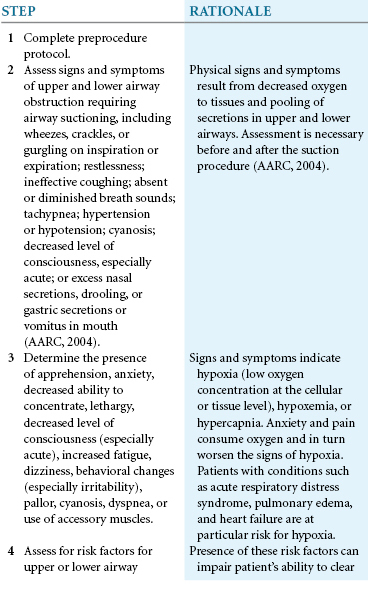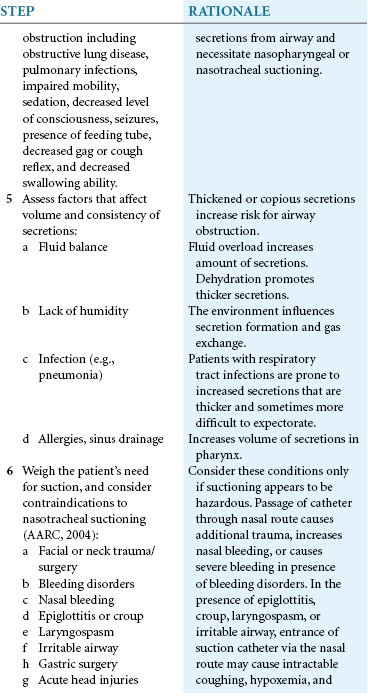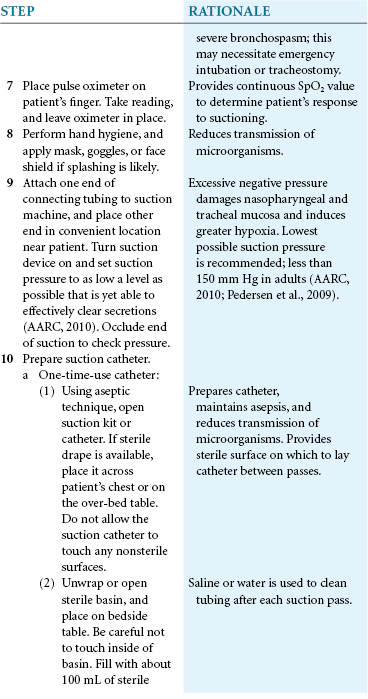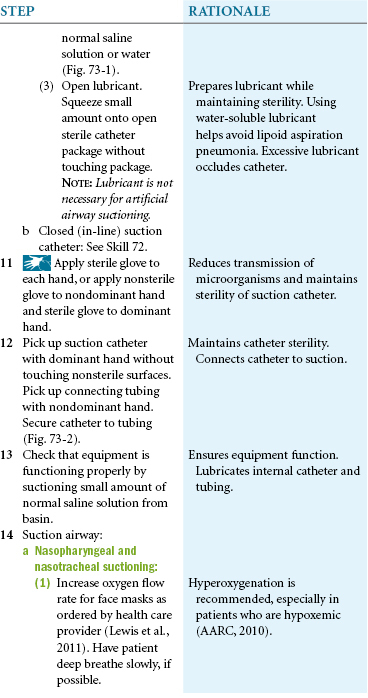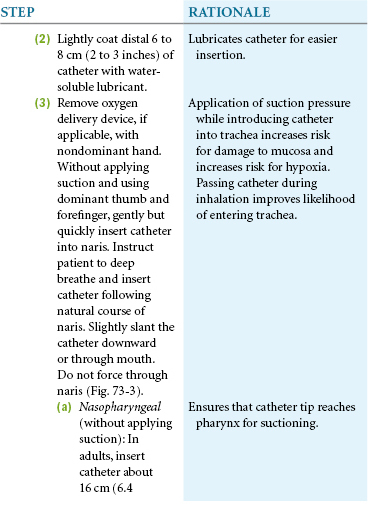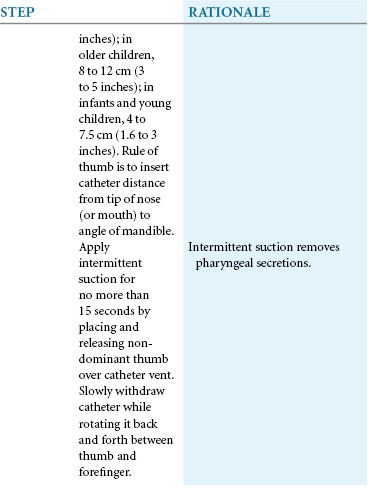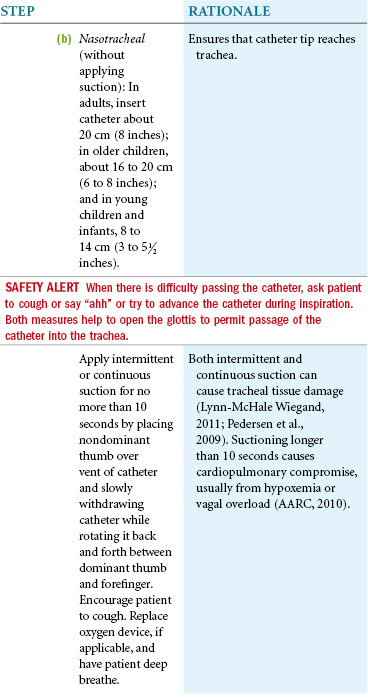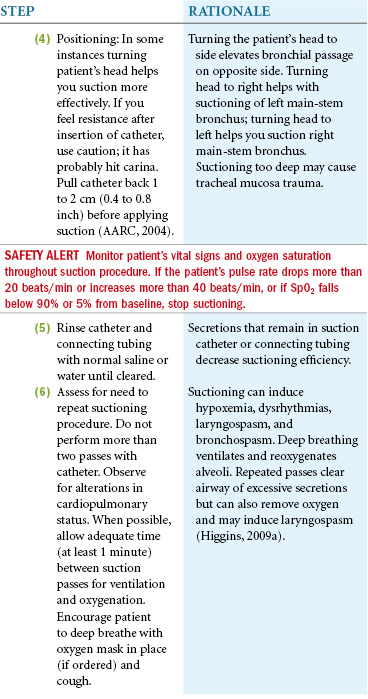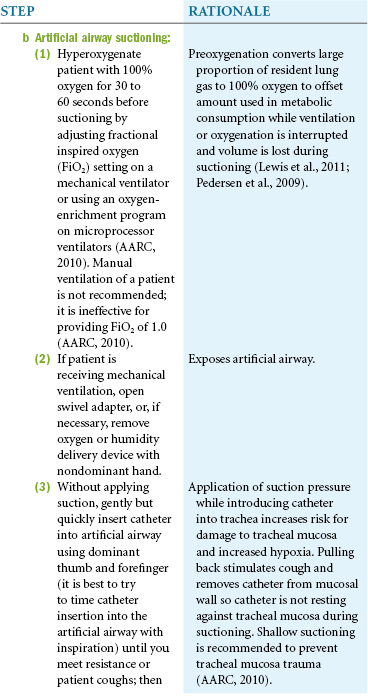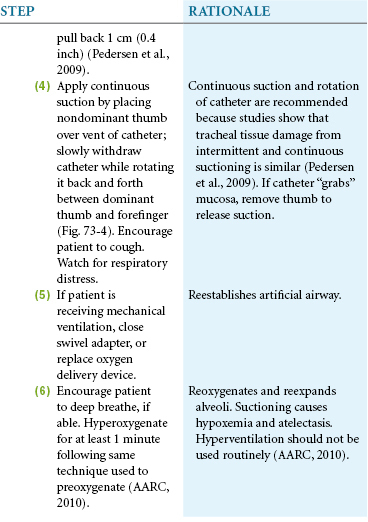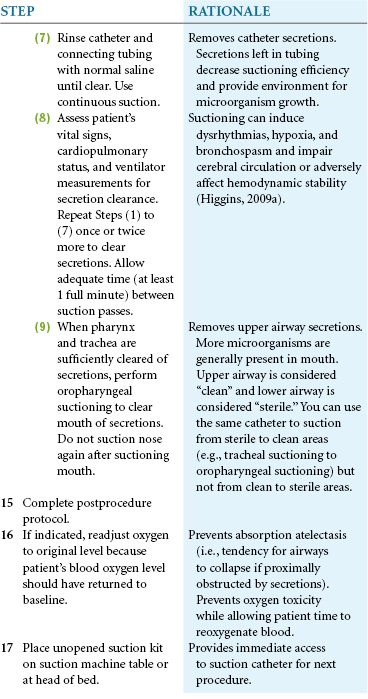Skill 73
Suctioning
Nasopharyngeal, Nasotracheal, and Artificial Airway
Oropharyngeal suctioning removes secretions only from the back of the throat. Tracheal airway suctioning extends into the lower airway to remove respiratory secretions and maintain optimum ventilation and oxygenation in patients who are unable to independently remove these secretions. When a patient’s oxygen saturation measurement falls below 90%, it is a good indicator of the need for suctioning. Assess patients to determine frequency and depth of suctioning. Some patients require suctioning every 1 or 2 hours, whereas others need it only once or twice a day (AARC, 2004).
Delegation Considerations
The skills of nasotracheal suction and suctioning a new artificial airway tube cannot be delegated to nursing assistive personnel (NAP). When the patient has an established tracheostomy and is stable, you can delegate suctioning. The nurse directs the NAP about:
Equipment
▪ Appropriate-size suction catheter (smallest diameter that will remove secretions effectively)
▪ Nasal or oral airway (if indicated)
▪ Two sterile gloves or one sterile and one clean glove
▪ Mask, goggles, or face shield
▪ Small Y-adapter (if catheter does not have a suction control port)
▪ Sterile normal saline solution or water, about 100 mL
